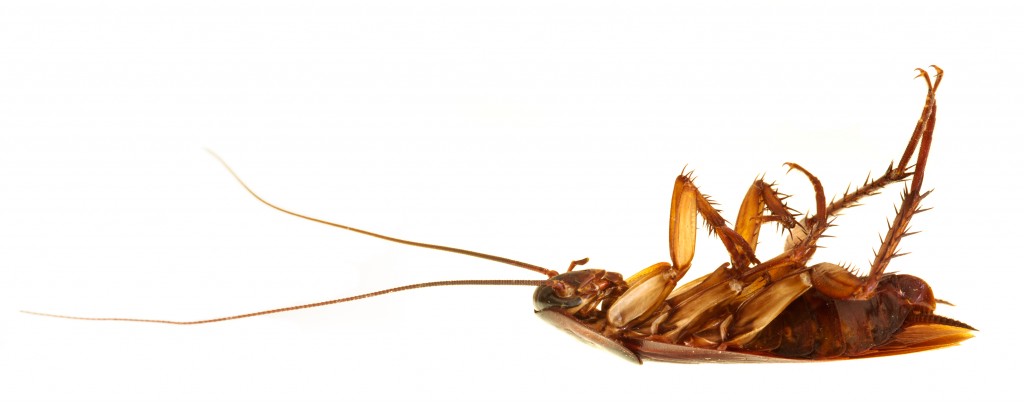 In most scenarios when we find roaches, we don’t ask why they die on their backs or what they do when they die in the outdoors. We are just glad they are dead and ask “are there more?”
In most scenarios when we find roaches, we don’t ask why they die on their backs or what they do when they die in the outdoors. We are just glad they are dead and ask “are there more?”
Marla Broadfoot of The Charlotte Observer asks entomology professor Coby Schal some of these questions about roaches that you’ve never thought to ask, but if you read up on them they are quite fascinating to think about.
Q. Why is it that most of the time when we come across a dead cockroach, it is on its back with its legs in the air?
A. There are two basic reasons. Cockroaches have a slightly rounded and greasy back, and a flat body that helps them squeeze and hide in narrow cracks and crevices. Their long legs give them a high center of gravity, meaning they carry most of their weight around their backs. When a cockroach is dying of old age, its high center of gravity pulls its back toward the floor, and its rounded back and weakened muscles prevent it from righting itself, particularly on smooth surfaces.
The insecticides we use to kill roaches can have the same effect. Most of these insecticides are neurotoxins – poisons that can trigger tremors and muscle spasms, eventually causing the cockroach to flip on its back. A healthy cockroach can easily right itself, but the tremors, lack of muscle coordination and, again, the rounded back and high center of gravity cause the intoxicated cockroach to get stuck that way.
Q. We humans usually have no trouble righting ourselves after lying down. But then again, we can’t climb up walls. How are roaches wired differently than humans to affect how they move?
A. Because we have two legs and cockroaches have three pairs of legs, the equivalent action for us would be going from lying to standing. We also have a high center of gravity, and righting or standing becomes more challenging as we age.
Despite this similarity, there are many striking differences that affect mobility. In the cockroach, the brain doesn’t coordinate everything. Instead, each pair of legs is controlled by its own bundle of nerves. So, a headless cockroach can still move around and try to right itself. Most cockroach species also have two sharp claws on each foot similar to a tree climber’s spurs, and a suction cup-like pad between the claws that enables them to walk upside-down even on smooth glass.
Q. We often witness the deaths of these pests in our homes, but how do roaches typically die in the wild?
A. Most people are not aware that about 5,000 cockroach species have been described and named worldwide, and there are just as many yet to be named. Only about half a dozen are household pests, but often outdoors cockroaches inadvertently enter the home and cannot find their way back out. The most important household pest, the German cockroach, has adapted so well to living in our homes that we don’t know of any wild populations of this species.
Cockroaches that live outdoors rarely die of old age because predators and parasites are rampant in the wild. For example, more than 50 percent of the diet of the red-cockaded woodpecker consists of wood cockroaches. Cockroaches are often the dominant prey in the stomach contents of lizards, geckos, birds, spiders and scorpions – some kinds of cockroaches actually “swim” through the desert sand and serve as an important food for the desert fauna.
marla.broadfoot@gmail.com
If you are seeing a number of roaches around your home or business, but they are not actually dead, then give us a call at Johnson Pest Control. We would be glad to handle those roaches so that they are no longer a living problem.